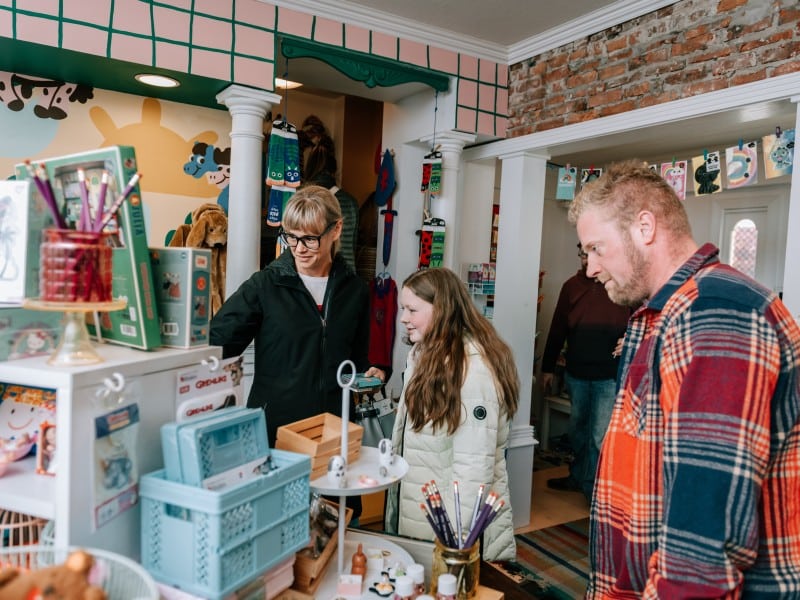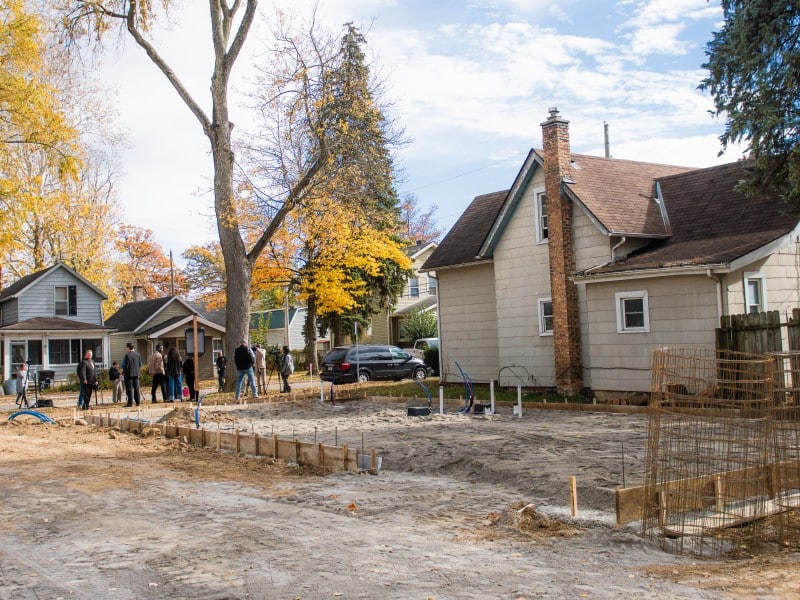Homogenization

I grew up working in locally-owned restaurants. I’ve travelled across the world, lived in several countries, and absorbed multiple foreign cultures. My perspective on Fort Wayne is largely based on the juxtaposition of what I have seen outside of this city and my experience programming artwork in Downtown Fort Wayne. In this essay I do not intend to belittle any of the progress we have made, but it is important to evaluate ourselves and accept that there is always room for growth. Fort Wayne is coined as “the City that saved itself.”[1]

That statement was made in reference to its residents having literally stopped flood water from overtaking the city. In truth, we are the City that sandbagged itself — though, the City that saved itself does have a nicer ring. Today the phrase is often used metaphorically to tout our innovation, our growth, and how we have manifested anew when other Rust Belt communities have faltered and died. For the last few decades we have looked to successful cities and recycled their good ideas, but perhaps that is our key mistake. Shifting one’s shape into that of a successful neighbor will never bring us into the lead. We have done an outstanding job keeping afloat without doing anything truly original that significantly separates us from other mid-sized cities trying to save themselves, and it is that homogenization which threatens our continued growth and stifles our potential. Homogeneous growth has innumerable causes, and I cannot begin to define the entire lattice; however, I can say that Fort Wayne needs to stop borrowing templates from others. We need to invest in our own ideas. We must make decisions based on quality of life and not the investor’s dollar, and we need to become comfortable with risk.
Risk
We are a community afraid of risk. We neglect to accept change unless we have seen the project, idea or concept executed successfully in another community — and our acceptance increases exponentially when the idea was successful in a community similar to ours in size and demographics.
My love of public art is deeply rooted in street art culture and the organic way creatives can saturate public spaces, redefine neighborhoods, and, often inadvertently, improve quality of place or gentrify. Street art and graffiti is meant to challenge the viewer, give a voice to the disenfranchised, or even shock the audience. Today, in Fort Wayne, I facilitate large-scale public art installations, and I balance my appreciation for street art culture against the kind of artwork Fort Wayne is prepared to accept. When grasping at how to define our refusal to accept risk, I think of how we go about selecting “safe” artwork. I cannot help but feel that it is this mentality which muffles our ability to move ahead in the race. Fort Wayne needs to accept challenging, untested ideas or we are destined to remain the same as every other survivor along the Rust Belt.
Outside Consultants
Perhaps because we prefer to invest in safe concepts, we tend to rely on outside consultants, who guide us through implementing secondhand projects. We accept the word of a consultant over the passion and knowledge of a local voice, or we require an outside consultant to validate a local voice. There are visionaries here in our community who are stymied in their ability to implement truly significant and impactful projects because we cannot accept homegrown innovation. It is exhausting to know that we are effectively defeating the fervor and drive of those who chose to stay, and we are defeating them in a manner that deflates their enthusiasm for this place and encourages them to invest their talent in other communities.
A good example is The Deck, which has been in existence for 15 years. The very city that later razed buildings and incentivized outside investors to program the riverfront, once had a mentality that The Deck posed a health hazard. A locally-owned restaurant overcame the odds to survive along the river — we need to question why we did not accept their vision.
Art This Way was a volunteer-run program for three years. It was not until the release of Gehl’s Public Realm Action Plan,[2] which expressed great approval of the Art This Way program, that the city formally accepted strategic leveraging of public art. The release of that study catapulted the Art This Way program forward. The city added lighting to the murals, and The Porch Off Calhoun[3] arrived a short time later. Studies like the Public Realm Action Plan are important, and they do give us necessary perspectives, but my concern is that it took an expensive study written by an outside firm for our community to truly embrace the power of public art. Since 2015, the FWDID had been discussing a seating zone in the lot beside Pint N Slice — and Art This Way has been installing murals since 2016 — but it took support from an outside voice to give credence to the ideas and to bring investment to these concepts. It worries me that there are locals who have the capacity to catapult us, and all it will take is a million-dollar study validating their dream for us to embrace it.
There is value and necessity in accepting both local ideas and concepts from outside consultants. I would like us to strive to see the potential in the local dreamer. It should not take an expensive consultant to tell us when we should endorse a local who is already working towards a better quality of life for our community.
Investors
Outside investment is vital to our growth and survival, but we have erred in incentivizing outside companies to the detriment of our local businesses. If the local company built their own establishment and grew their business without incentives or breaks, it is not quite the same as recruiting a national chain and coddling them as they establish themselves in our city. The Deck brought activation to the river when it was not en vogue. We need to examine the methods by which we will incentivize their national chain competitors to establish themselves along the same waterways.
In that same vein, we are guilty of catering too often to outside investor influence. Outside investors are profiting from our city’s growth and progress; however, it is a mistake to believe that they have our quality of life in mind when they make business decisions. They do not live in our community, and they are only considering their bottom line when they use their influence to change policy in Fort Wayne. I would like to see our community make more decisions based on what will improve our city rather than what will make an investor more likely to build another mixed-use space.
In this essay I intend to evaluate what we could change, but my aim is not to disparage our many accomplishments. It would be foolish to argue against tried and trusted mechanisms of change and growth; however, we need to strike a balance between what we borrow and what we foster at home. Fort Wayne can become a community ready to welcome change and embrace projects — even projects untested by our competitors. We can curb the trend of homogenization and embrace the ameliorative principles of innovation and growth. Fort Wayne has the capacity to be anything. If we choose not to sandbag ourselves, if we hold back the flood of investors who are not invested in our community’s best interest, if we learn to respect our innovators, and if we accept that all of this takes a certain amount of risk, this will determine what shape we take in the next twenty years. We could be the city that saved itself, again.
This essay is part of a citizen-led book project in Fort Wayne called FORTHCOMING: Considering the Future State of Our City. To learn more and read additional essays, visit the Foreword and Preface.
Alex Hall is an Indiana University, Bloomington graduate and an artist whose artworks can be found in private and public collections throughout the United States. She has a BA in Political Science and a BA in Slavic Languages and Literature with a certificate from the Russian and Eastern European Institute. Since 2014 she has worked as a professional painter, muralist, illustrator, and public art consultant–leveraging public art to improve quality of place and drive economic development. In 2016 she developed Art This Way, a public art program which implements large scale public art in Downtown Fort Wayne, IN. She manages the program for the Fort Wayne Downtown Improvement District. She consults for the Fort Wayne Public Art Commission. Beyond her work in Fort Wayne, she was the developer and public art consultant for Arts United of Greater Fort Wayne and the Northeast Indiana Regional Partnership’s Make It Your Own Mural Fest, the NewAllen Alliance’s rural mural projects, and the Liv Co Walls mural festival in New York. Hall lives with her dog, Clemens, in downtown Fort Wayne, IN.










